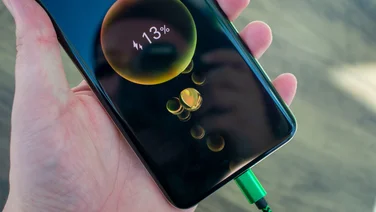To help us provide you with free impartial advice, we may earn a commission if you buy through links on our site. Learn more

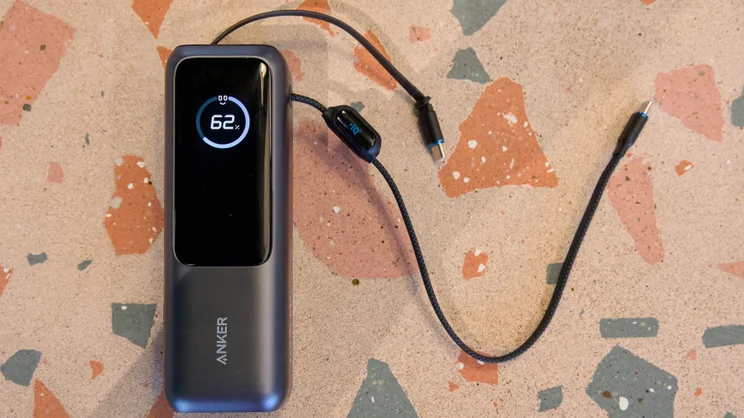
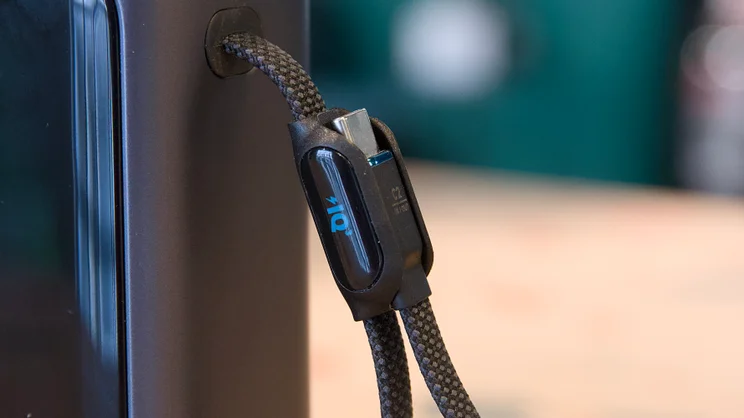
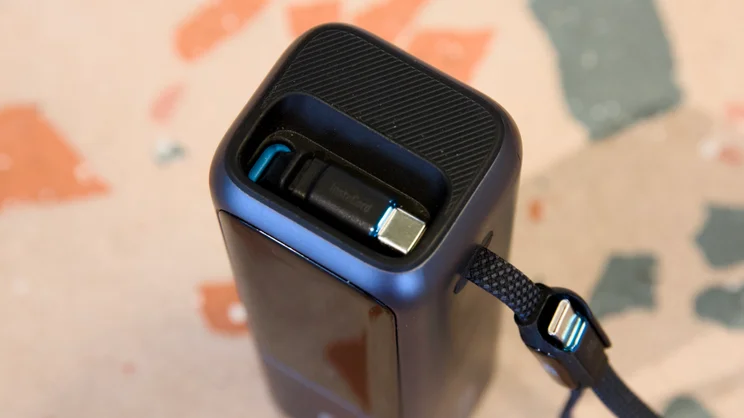
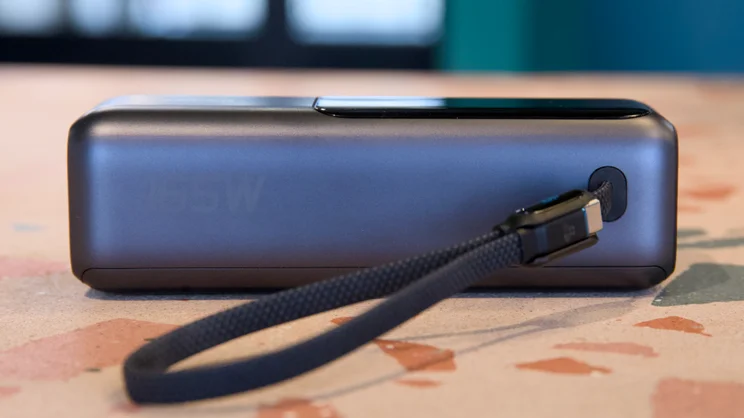
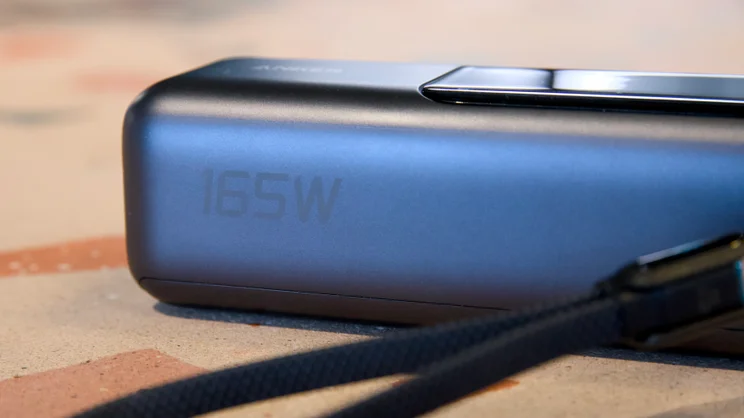
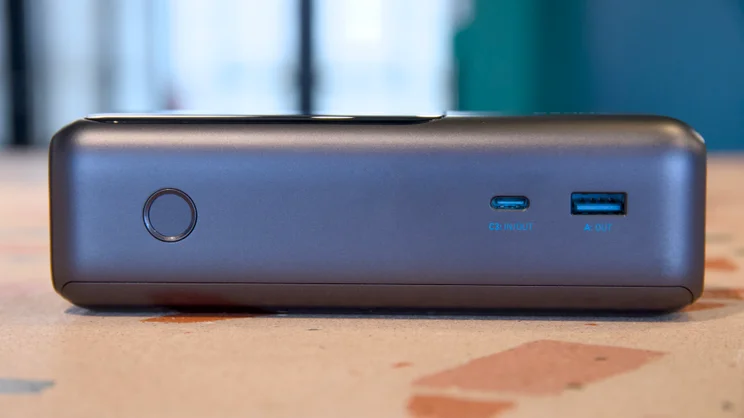
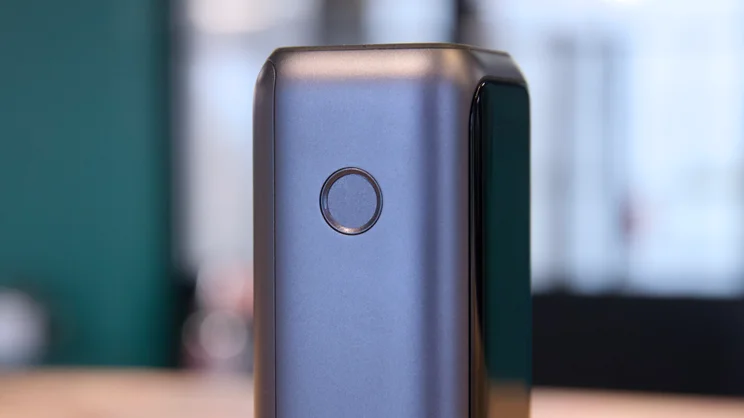
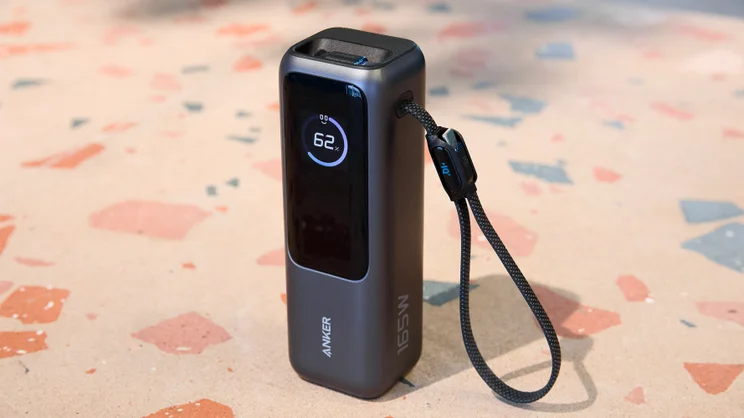
- 165W maximum output
- Fast charging for four devices
- Dual built-in cables
- Lacks wireless charging
- Heavy
The capabilities of smartphones, laptops and handheld games consoles may have rocketed in recent years but we rarely see as big a leap when it comes to battery life. That’s why portable battery packs, especially big, beefy ones like this Anker A1695, are so popular.
Stick one of these in your hand luggage, and it’ll keep all your tech going, throughout the longest of long-haul flights, or off-site work day. And not only is its capacity generous for the size – it squeezes 25,000mAh or 90Wh into a package not much larger than a carton of apple juice – but it will charge your devices in double quick time.
Anker Laptop Power Bank (A1695): What do you get for the money?
The Anker A1695 is well-equipped and reasonably priced, too. Its RRP is £89, but looking at its Amazon price history indicates it spends a lot of time at £66 – and at that price it’s a bargain. It’s certainly better value than our current favourite laptop charger, the Cuktech 15 Ultra, which costs £90 for less capacity (20,000mAh), and has only once fallen to the more reasonable price of £75.
The Anker is a similar size to the Cuktech, measuring 54 x 49 x 157mm and weighing 595g, so it’s not something you can simply slip into your pocket. However, its capabilities and 25,000mAh size mean it could well be the only backup power source you need when you go away.









There’s a built-in display that provides information on various stats and, impressively, two integrated USB-C cables – one 700mm-long spring-loaded, retractable cable that feeds out from an opening in the top of the charger and another, shorter cable, hidden in the wrist strap. There’s also an extra USB-C port used for charging the power bank itself, or charging a third USB-C device, and a USB-A port for older devices.
All three USB-C ports are capable of charging at 100W on their own, while the USB-A port can charge at up to 33W. When charging multiple devices, the powerbank can output 165W with two USB-C devices connected or 133W with one USB-C device and one USB-A device connected.









While the number of ports here means you can attach up to four devices simultaneously, expect lower charging speeds to ensue; the maximum power output falls to 130W with three or more devices attached.
What did we like about it?
For most users, the ability to charge at 100W is probably overkill. I review laptops fairly regularly and still couldn’t find one in our current stock that would push the Anker to its limits – I had to return our loan MacBook Pro 14 a month or so ago, alas.
Still, that does give you some degree of headroom while charging multiple devices, and even at lower wattages you’re looking at fairly speedy performance.









I plugged it into a 15in M2 Apple MacBook Air and it charged at 70W, going from flat to 30% in 21 minutes. That’s pretty darned quick, but more recent MacBooks should charge even faster.
Anker says the Laptop Power Bank can top up a 16in M3 MacBook Pro to 80% in 30 minutes. Perhaps more impressively, I plugged in a second laptop, and found it charged at 63W without affecting the rate at which the MacBook Air was charging.









Even after this torture test I was left with enough capacity to fully charge a couple of mobile phones and my Switch 2 from empty. The battery charged my iPhone 16 Plus from empty to 50% in 26 minutes with speeds topping out at 33W and a OnePlus 12 phone from empty to 57% in 32 minutes.
It’s a true thoroughbred of a charger, and I also loved being able to monitor both input and output charging speeds on the screen, as well as the overall capacity and the temperature of the battery – which never got even remotely toasty, no matter how hard I pushed it.
What could it do better?
While there isn’t anything I could reasonably pick out that the Anker Laptop Powerbank (A1695) could do better, the only thing I would say is that this is a large battery and, thus, it does take a while to charge.
In theory, it can take as little as 1hr 30mins to go from zero to 100% connected to a 100W charger. In practice, it tended to reach its maximum charging speed and stay there only for a short while, then drop back to around 50W to cool. I found it would typically take a couple of hours to fully charge.









The only other caveat is you’ll have to keep an eye on it when you are charging power-hungry devices, because it depletes surprisingly quickly when it’s charging close to its maximum output. Leave it connected to your laptop for too long, and you might find it empty when you return, and unable to give your phone a quick top-up.
As you may well have already noted, the Anker Laptop Power Bank does not support MagSafe or have a wireless charging pad for topping up smaller devices – although the built-in cables do mean that this isn’t too much of a major problem.









And while I do worry about the reliability of the spring-loaded retraction mechanism that’s responsible for pulling the main USB-C cable back into the body of the battery once you’ve finished with it, Anker has clearly thought about this and claims it has been tested to withstand 20,000 retractions. Which is good because, should it fail, you’ll be left with a rather unsightly cable dangling free.
Should you buy the Anker Laptop Power Bank (A1695)?
If you’re not put off by these admittedly minor negatives, or Anker’s recent recall woes, the A1695 is a fantastically flexible power bank at a bargain price. For only £66, you’re getting a massive amount of charging capacity and great performance in a package that’s convenient and easy to get on with.
If you travel regularly and want to free yourself of the stress of having to locate a working power point in the airport or on the train, the Anker Laptop Power Bank (A1695) makes an excellent choice. It’s a superb power bank at a very attractive price.
















